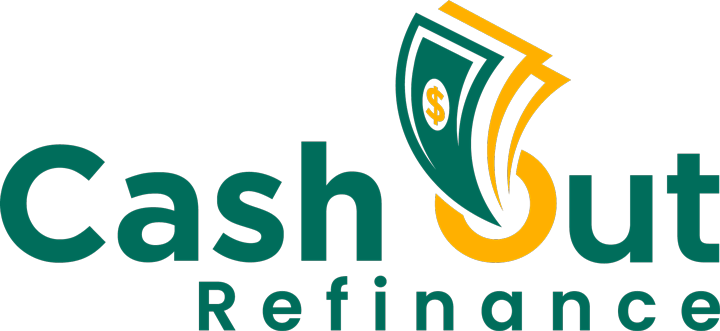For veterans and active-duty service members, deciding on the right refinancing option can significantly impact their financial future. Two of the most common choices are the VA cash-out refinance and conventional loans. While both options allow homeowners to access their home’s equity, they come with distinct differences that make the VA cash-out refinance particularly appealing to veterans.
In this blog post, we’ll explore the key differences between a VA cash-out refinance and conventional loans, helping you determine which is the better option for your refinancing needs. From lower interest rates to the absence of private mortgage insurance (PMI), we’ll compare these two options so veterans can make informed decisions.
VA Cash-Out Refinance vs. Conventional Loans

Understanding the Basics of VA Cash-Out Refinance
A VA cash-out refinance is a loan program offered by the U.S. Department of Veterans Affairs (VA) that allows veterans, active-duty service members, and eligible surviving spouses to refinance their mortgage and take out cash based on the value of their home. This type of refinance is unique to veterans and comes with several benefits that aren’t available with other loans.
Some of the key features of a VA cash-out refinance include:
- The ability to borrow up to 100% of your home’s appraised value.
- No private mortgage insurance (PMI) required, regardless of the loan-to-value ratio (LTV).
- Competitive, often lower interest rates compared to conventional loans.
- No prepayment penalties, allowing borrowers to pay off their loans early without incurring extra fees.
What is a Conventional Cash-Out Refinance?
A conventional cash-out refinance allows homeowners to replace their existing mortgage with a new one and access cash based on their home’s equity. Unlike VA loans, conventional loans are not backed by a government entity and typically have stricter qualification requirements. Borrowers can use a conventional cash-out refinance for purposes such as debt consolidation, home improvements, or covering major expenses.
Some of the key features of a conventional cash-out refinance include:
- Access to a percentage of your home’s equity, typically up to 80%.
- Private mortgage insurance (PMI) is required if your LTV exceeds 80%.
- Interest rates are based on your credit score, loan amount, and overall financial profile.
- Stricter eligibility requirements, such as higher credit scores and income documentation.
1. Loan-to-Value (LTV) Ratio: Accessing Your Home’s Equity
One of the most significant differences between a VA cash-out refinance and a conventional loan is the loan-to-value (LTV) ratio, which determines how much of your home’s value you can borrow.
VA Cash-Out Refinance LTV
With a VA cash-out refinance, veterans can access up to 100% of their home’s appraised value. This is a major advantage for veterans who need to tap into more of their home’s equity to cover large expenses. For example, if your home is valued at $300,000, you can refinance and borrow up to the full $300,000. After paying off your existing mortgage, the remaining funds are given to you in cash.
Conventional Loan LTV
By comparison, most conventional cash-out refinances have stricter limits on the LTV ratio. Conventional lenders typically allow homeowners to refinance up to 80% of the home’s value, meaning that if your home is valued at $300,000, you could only borrow up to $240,000. After paying off your existing mortgage, the remaining cash would be less than what is available with a VA loan.
For veterans who need to maximize their access to home equity, the VA cash-out refinance is clearly the better option, as it provides greater flexibility and access to more funds.
2. Private Mortgage Insurance (PMI)
Another critical difference between VA cash-out refinances and conventional loans is the requirement for private mortgage insurance (PMI). This insurance protects the lender in case the borrower defaults on the loan, but it adds significant cost to the monthly mortgage payment.
No PMI with VA Cash-Out Refinance
One of the major advantages of a VA cash-out refinance is that it does not require PMI, regardless of the LTV ratio. Whether you borrow 80% or 100% of your home’s value, you will not have to pay for PMI. This benefit can save veterans thousands of dollars over the life of their loan, making the VA cash-out refinance much more affordable than conventional loans.
PMI Required for Conventional Loans
With conventional loans, PMI is required if your LTV exceeds 80%. For example, if you take out a conventional loan with an LTV of 85%, you will be required to pay PMI until you’ve built up at least 20% equity in your home. PMI can range from 0.5% to 1% of the loan amount annually, adding hundreds of dollars to your monthly payment.
For veterans who want to avoid the extra cost of PMI, a VA cash-out refinance is the better option, especially if they plan to refinance with a higher LTV ratio.
Interest Rates: VA vs. Conventional Loans
3. Interest Rates: VA vs. Conventional Loans
Interest rates are another major factor to consider when choosing between a VA cash-out refinance and a conventional loan. Your interest rate determines how much you’ll pay in interest over the life of the loan, so securing a lower rate can result in significant savings.
VA Loan Interest Rates
VA loans often come with lower interest rates compared to conventional loans. This is because VA loans are backed by the federal government, which reduces the risk for lenders. As a result, lenders are able to offer more competitive interest rates to veterans and service members.
In general, VA loan rates can be 0.5% to 1% lower than conventional loan rates, making them a more affordable option. Even a small difference in interest rates can lead to substantial savings over the course of a 30-year mortgage.
Conventional Loan Interest Rates
Conventional loan interest rates are based on several factors, including your credit score, loan amount, and the loan’s LTV ratio. Borrowers with excellent credit and a lower LTV ratio may qualify for competitive rates, but borrowers with lower credit scores or higher LTVs will likely face higher interest rates.
For veterans who want to secure the lowest possible interest rates, the VA cash-out refinance is generally the better choice, especially if they have less-than-perfect credit.
4. Eligibility Requirements
The eligibility requirements for a VA cash-out refinance and a conventional loan are also different, with VA loans offering more flexibility for veterans and service members.
VA Cash-Out Refinance Eligibility
To qualify for a VA cash-out refinance, you must meet the following criteria:
- Be a veteran, active-duty service member, or eligible surviving spouse.
- Have served a minimum amount of time, depending on your military service status.
- Meet the lender’s credit and income requirements.
- Have sufficient income to cover the new mortgage payment.
Unlike conventional loans, VA loans are designed to be more accessible to veterans, and the eligibility criteria reflect that mission. The VA’s more lenient requirements make it easier for veterans to qualify for refinancing, even if they have lower credit scores or higher debt-to-income ratios.
Conventional Loan Eligibility
Conventional loans have stricter eligibility requirements than VA loans. To qualify for a conventional cash-out refinance, you’ll typically need:
- A credit score of at least 620, though many lenders prefer scores above 680.
- A debt-to-income (DTI) ratio of 43% or lower.
- At least 20% equity in your home to avoid PMI.
These stricter requirements can make it more difficult for veterans with lower credit scores or limited equity to qualify for a conventional loan. For veterans who meet the VA’s eligibility criteria, the VA cash-out refinance offers a much easier path to refinancing.
5. Prepayment Penalties
Some loans come with prepayment penalties, which are fees charged if you pay off your mortgage early. This can be a concern for borrowers who plan to pay off their loans ahead of schedule or refinance again in the future.
No Prepayment Penalties with VA Loans
With a VA cash-out refinance, there are no prepayment penalties. This means you can pay off your loan early or make extra payments toward your principal without incurring additional fees. This flexibility allows veterans to reduce their loan balance faster and save money on interest payments.
Prepayment Penalties with Conventional Loans
Some conventional loans may include prepayment penalties, especially if the borrower pays off the loan within the first few years. These penalties can add up to thousands of dollars, making it more expensive to pay off your mortgage early. Be sure to read the terms of your conventional loan carefully to understand whether prepayment penalties apply.
Final Thoughts: Which Is Better for Veterans?
When comparing VA cash-out refinances to conventional loans, the VA option clearly offers more advantages for veterans. With the ability to refinance up to 100% of your home’s value, no PMI, lower interest rates, and more lenient eligibility requirements, the VA cash-out refinance is a flexible and cost-effective solution for veterans looking to access their home’s equity.
For veterans who want to maximize their financial benefits, reduce borrowing costs, and avoid the additional expenses associated with conventional loans, the VA cash-out refinance is the superior choice. If you’re considering refinancing your home, consult with a mortgage professional to explore your options and determine whether a VA cash-out refinance is right for you.

